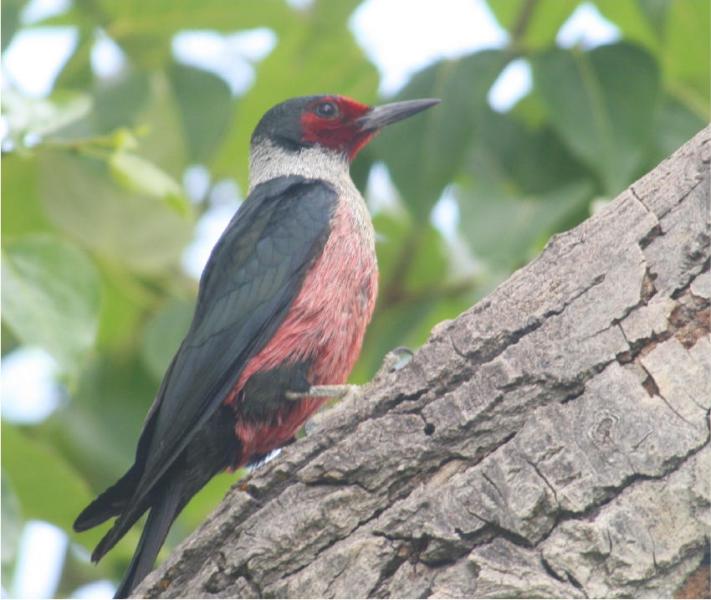Lewis: An Unusual Woodpecker
By Dave Hanks
Pink and green is an unusual color combination, but the LEWIS WOODPECKER is an unusual woodpecker. This bird is named for Meriwether Lewis, who shot a few specimens while on the Lewis and Clark expedition, and after returning home, gave them to the Philadelphia museum. There are very few American species that are pink or green. But, this one has a pink belly and a green back. This 11 inch bird, also, has a red face, and a white neck and throat – an interesting use of colors.
This is an unusual woodpecker, not only because of its coloration, but because of a habit of feeding in mid-air by catching flying insects. Berries and nuts are also eaten – the nuts stored in tree holes for winter consumption.
The Lewis Woodpecker is strictly a western species. Oregon and Northern California woodlands have been especially attractive to this species. These areas are abundant in open Ponderosa Pine forests, riparian woodlands (dominated by cottonwoods), and logged woodlands with standing snags - ideal for nesting. These are the habitats that the bird prefers.
There was a cottonwood tree (that has since been cut down) that was a favorite nesting site for Lewis Woodpeckers. It was on the upper entrance to the Harrington Fork picnic area – along Rock creek in Twin Falls County. We used to visit it every spring to see the woodpeckers. It was a sad day when it was no more. Since the loss of many special trees along Rock Creek, we have had to go further afield to find our pink-bellied friend. Once we visited a central Idaho campground, where the species was reported to have been seen. We were disappointed when the campground host told us that we were a couple of weeks late. But not so fast! I found one down by the river!
Loss of habitat has put this species in trouble. It would be a shame, if this neat bird became extinct!
(Resting in a cottonwood tree by the Salmon River)
|
